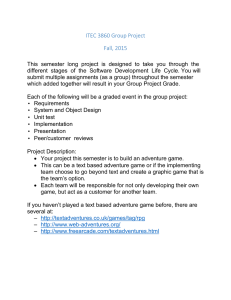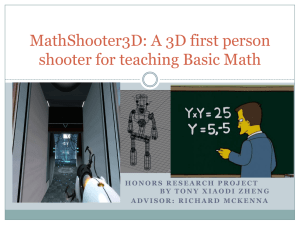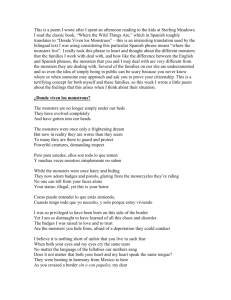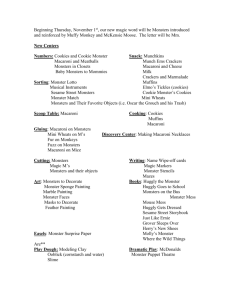smudz
advertisement
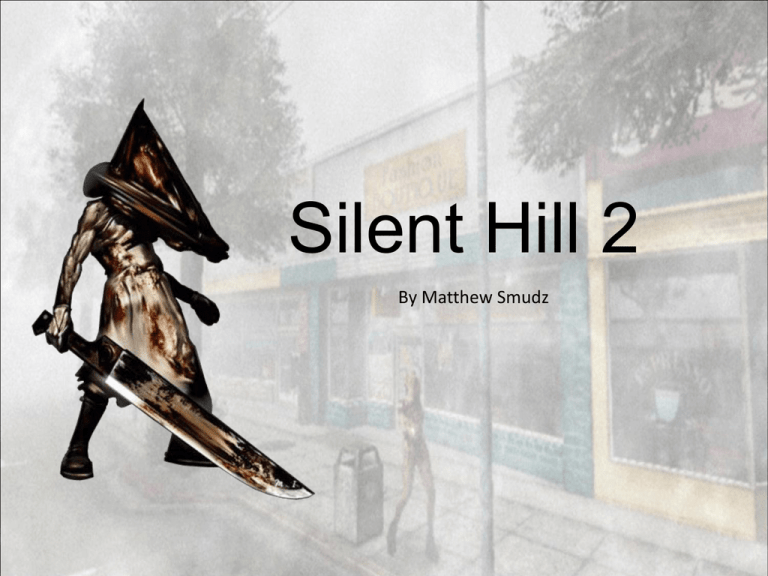
Silent Hill 2 By Matthew Smudz Basic information Platform: PC Genre: Horror Year: 2002 (now out of production) Developer: Konami / Team Silent Designer: Masashi Tsuboyama Minimum hardware requirements: Windows XP/ME/2000/98 700 MHz processor 64 MB RAM DirectX 8.1 compliant 3D accelerator card w/32 MB VRAM 1.8 GB free disk space 4X CD-ROM DirectX 8.1 compliant sound card My setup: Windows 7, 2.10 GHz Pentium Dual-Core CPU, 2 GB RAM, Intel Graphics Media Accelerator 4500MHD. Ran on full settings. Played without installing. The game occasionally froze, but no major bugs otherwise. Game summary Survival horror action/puzzle game James Sunderland receives a letter from his dead wife Mary telling him to meet her in Silent Hill, a town now full of bizarre monsters. James realizes he euthanized Mary, who was terminally ill, and must confront the guilt of murdering her. The player controls James, and must explore the town to gather clues and find Mary. Puzzles block the way, and James must avoid or kill various monsters and bosses. Lots of exploration Minimalist user interface: no HUD. Player manages a small inventory. Radio: static informs the player when they’re nearing a monster. Greatly enhances tension Scoring: the player is evaluated at the end of the game, though this is an ancillary feature. Audience • • • • Adult Seems to have a strong female fan-base Gameplay is more than just shooting things Does not hold the player’s hand. Not for the easily frustrated Artwork Iconic Silent Hill is a darkly atmospheric environment. Everything seems decayed and is covered in rust, blood, and filth. The town and monsters model the psychological breakdown of the characters The town is enshrouded in fog Layouts of some levels violate physical laws of space The town is a metaphoric descent into hell. Monster designs: Jungian shadows Nurses: James’ demonization and possible sexualizing of the medical personnel who attended his dying wife. Monster designs James’ objectification of women, or possibly his guilty desires while his wife was sick. Monster designs The “executioner” in James is turned against himself. Occasionally shown abusing or dominating other monsters. Story: Hemingway’s theory of omission “If a writer of prose knows enough about what he is writing about he may omit things that he knows and the reader, if the writer is writing truly enough, will have a feeling of those things as strongly as though the writer had stated them.” –Ernest Hemingway, Death in the Afternoon • The story only hints at the complex tragedy of James and Mary’s suffering • Environment and monsters are used as well as cutscenes to hint at James’ past • The writing is lacking, but we still feel the story strongly because the game is so effectively designed this way Game strengths • Atmosphere: frightening, suffocating • Uniquely recognizable art style/aesthetics • A great story is driven by the gameplay and not just the other way around. The story is not just an excuse for the action; rather, much of the design choices are motivated by the story • Constant sense of mystery and progress (or descent?) keeps pulling the player in • Unusually impactful ending rarely seen in games • Sound: extremely atmospheric, and a large source of scares • One of the best soundtracks in any medium Game weaknesses • Contrived/obscure puzzles, typical of adventure games. The solutions should require thought, but be more intuitive • Frustrating camera angles; actually expose the player to monsters, which is a poor challenge • Inconsistent boss difficulty: some require you to simply run away, while others take many repeated attempts • Combat is clunky and should often be avoided (this also makes the game scarier, though) • Voice acting and dialogue are lacking • Gameplay becomes repetitive: finding items, solving puzzles, avoiding enemies… Design mistakes • Blatant inconsistency in boss difficulty • Map system is too hard to navigate for a game that often requires it • Reloading guns from the menu is instantaneous, but takes a long time in-game • No HUD. This suits the game, but is a bad interface because it forces you to open your inventory to do things like checking ammo and health How does it compare? • Contemporaries: Resident Evil, Fatal Frame, Doom… • Shares “tank like” controls with Resident Evil • Not just blasting away: player character is not experienced with combat and has no weapons • Threats are more psychological (Pyramid Head vs. zombies) • More emotional and character-driven • Hard to measure scares • Not as action packed. More puzzle- and navigation-driven • Atmosphere: creates a place • Modern horror: more action-packed (Resident Evil 4, Dead Space, Left 4 Dead) Summary • A scary, emotional, narratively complex game with great music/art; an immersive horror classic • A dated camera system, poor voice acting/writing, tank-like controls, and linear, repetitive gameplay hold the game back from perfection • A little more variety and better writing would have gone a long way • Should be experienced by anyone interested in story-driven games
